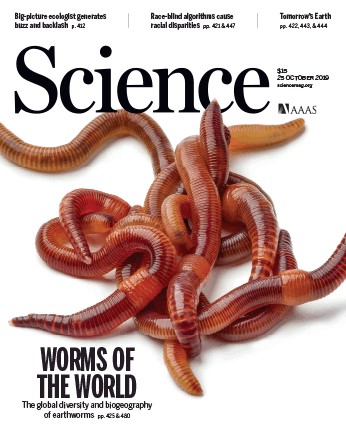Phillips HRP, Guerra CA, Bartz MLC, Briones MJI, Brown G, Crowther TW, Ferlian O, Gongalsky KB, van den Hoogen J, Krebs J, Orgiazzi A, Routh D, Schwarz B, Bach EM, Bennett J, Brose U, Decaëns T, König-Ries B, Loreau M, Mathieu J, Mulder C, van der Putten WH, Ramirez KS, Rillig MC, Russell D, Rutgers M, Thakur MP, de Vries FT, Wall DH, Wardle DA, Arai M, Ayuke FO, Baker GH, Beauséjour R, Bedano JC, Birkhofer K, Blanchart E, Blossey B, Bolger T, Bradley RL, Callaham MA, Capowiez Y, Caulfield ME, Choi A, Crotty FV, Dávalos A, Cosin DJD, Dominguez A, Duhour AE, van Eekeren N, Emmerling C, Falco LB, Fernández R, Fonte SJ, Fragoso C, Franco ALC, Fugère M, Fusilero AT, Gholami S, Gundale MJ, López MG, Hackenberger DK, Hernández LM, Hishi T, Holdsworth AR, Holmstrup M, Hopfensperger KN, Lwanga EH, Huhta V, Hurisso TT, Iannone BV 3rd, Iordache M, Joschko M, Kaneko N, Kanianska R, Keith AM, Kelly CA, Kernecker ML, Klaminder J, Koné AW, Kooch Y, Kukkonen ST, Lalthanzara H, Lammel DR, Lebedev IM, Li Y, Lidon JBJ, Lincoln NK, Loss SR, Marichal R, Matula R, Moos JH, Moreno G, Morón-Ríos A, Muys B, Neirynck J, Norgrove L, Novo M, Nuutinen V, Nuzzo V, Rahman P M, Pansu J, Paudel S, Pérès G, Pérez-Camacho L, Piñeiro R, Ponge JF, Rashid MI, Rebollo S, Rodeiro-Iglesias J, Rodríguez MÁ, Roth AM, Rousseau GX, Rozen A, Sayad E, van Schaik L, Scharenbroch BC, Schirrmann M, Schmidt O, Schröder B, Seeber J, Shashkov MP, Singh J, Smith SM, Steinwandter M, Talavera JA, Trigo D, Tsukamoto J, de Valença AW, Vanek SJ, Virto I, Wackett AA, Warren MW, Wehr NH, Whalen JK, Wironen MB, Wolters V, Zenkova IV, Zhang W, Cameron EK, Eisenhauer N.
Global distribution of earthworm diversity.
Science. 2019 Oct 25;366(6464):480-485.
DOI: 10.1126/science.aax4851.
RESUMEN
Soil organisms, including earthworms, are a key component of terrestrial ecosystems. However, little is known about their diversity, their distribution, and the threats affecting them. We compiled a global dataset of sampled earthworm communities from 6928 sites in 57 countries as a basis for predicting patterns in earthworm diversity, abundance, and biomass. We found that local species richness and abundance typically peaked at higher latitudes, displaying patterns opposite to those observed in aboveground organisms. However, high species dissimilarity across tropical locations may cause diversity across the entirety of the tropics to be higher than elsewhere. Climate variables were found to be more important in shaping earthworm communities than soil properties or habitat cover. These findings suggest that climate change may have serious implications for earthworm communities and for the functions they provide.
